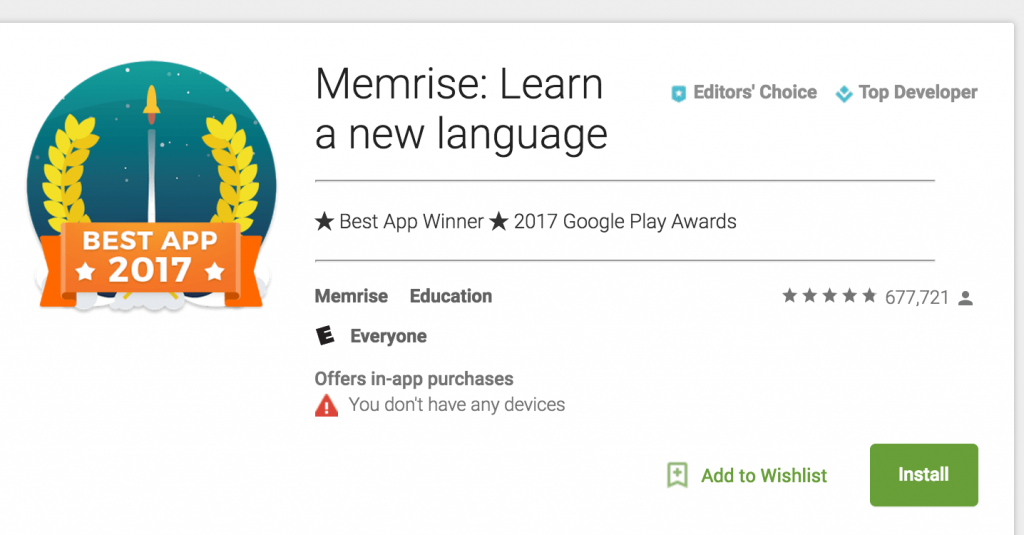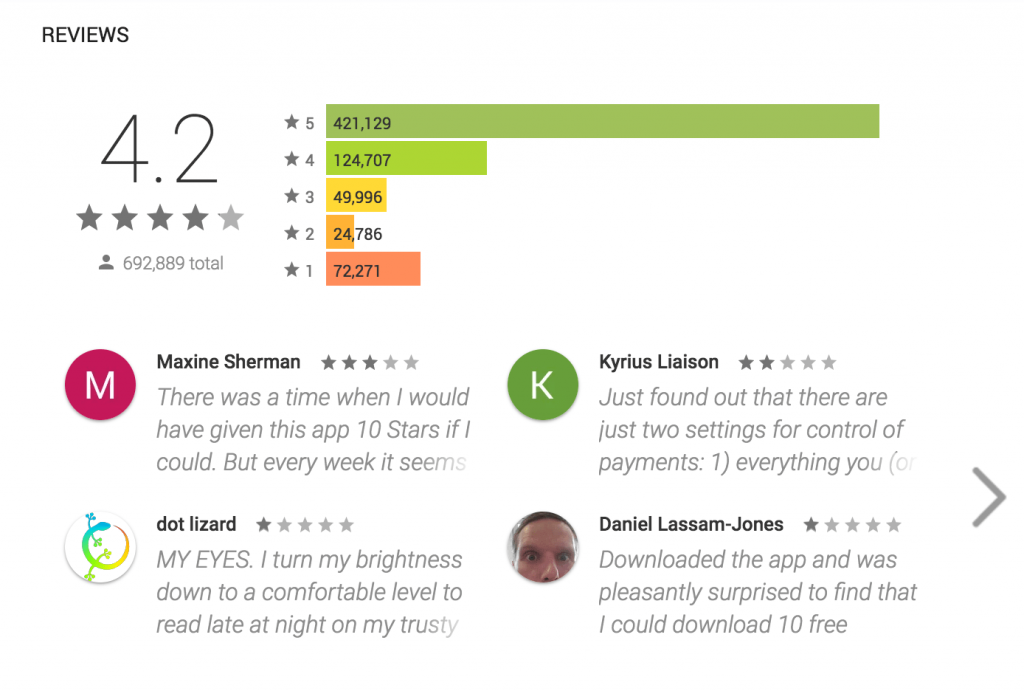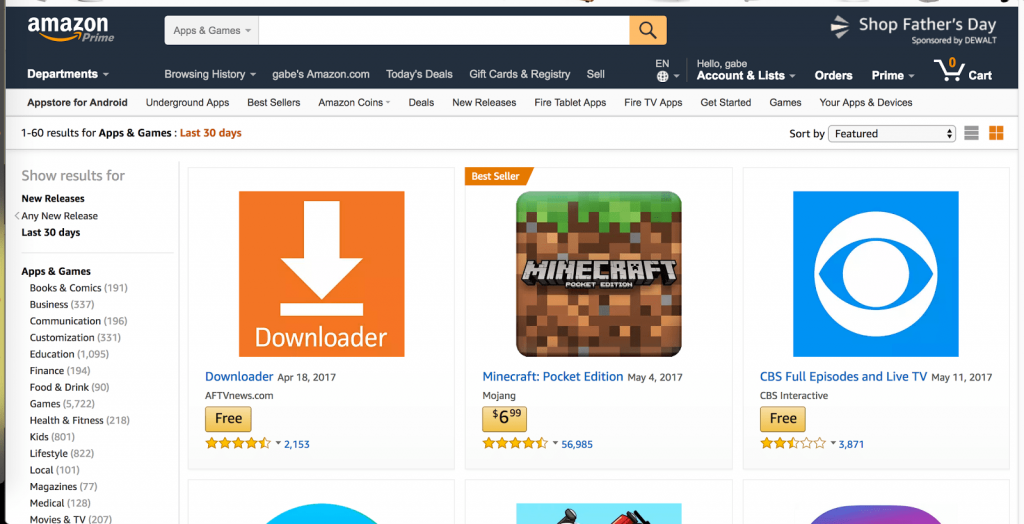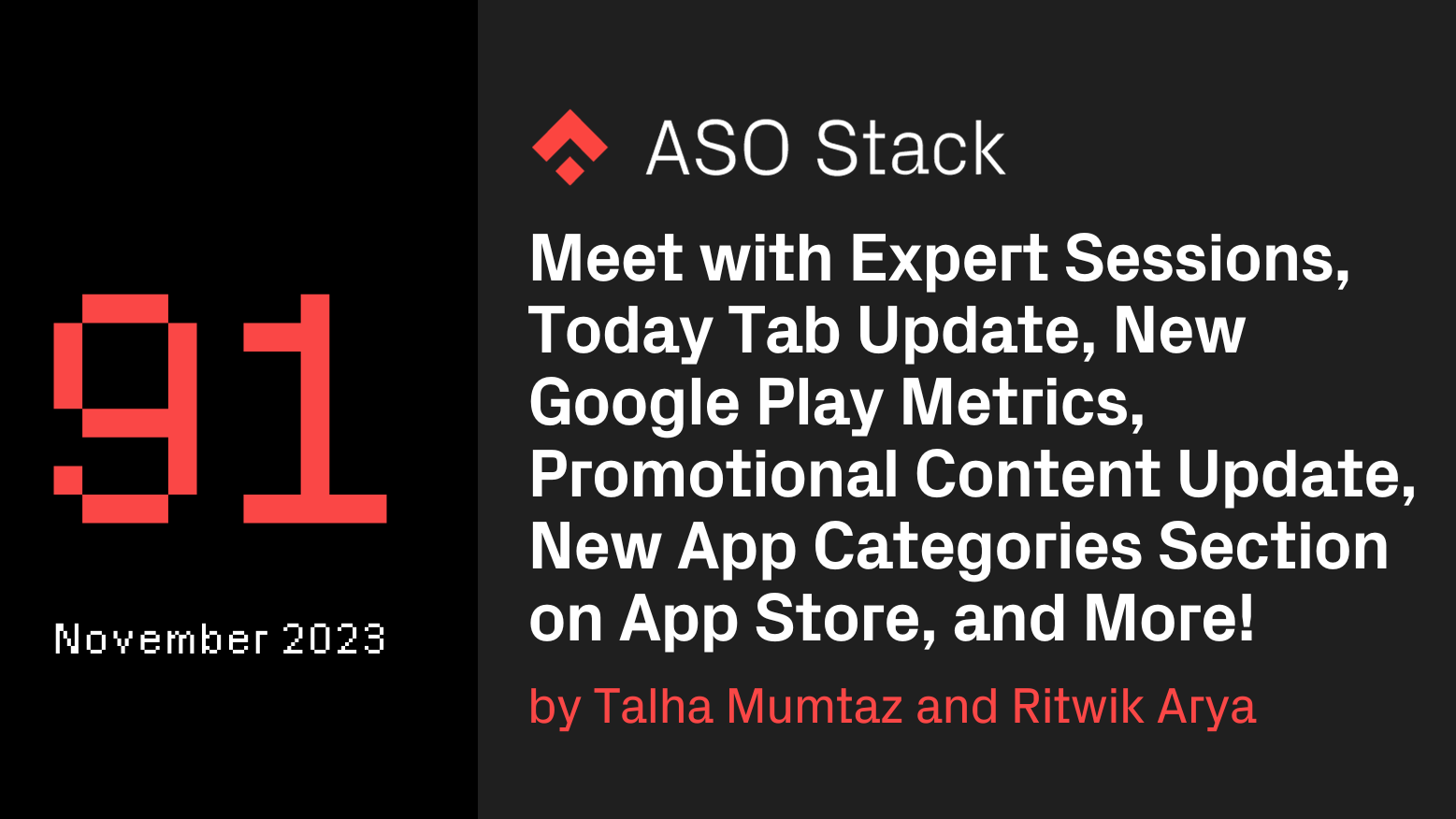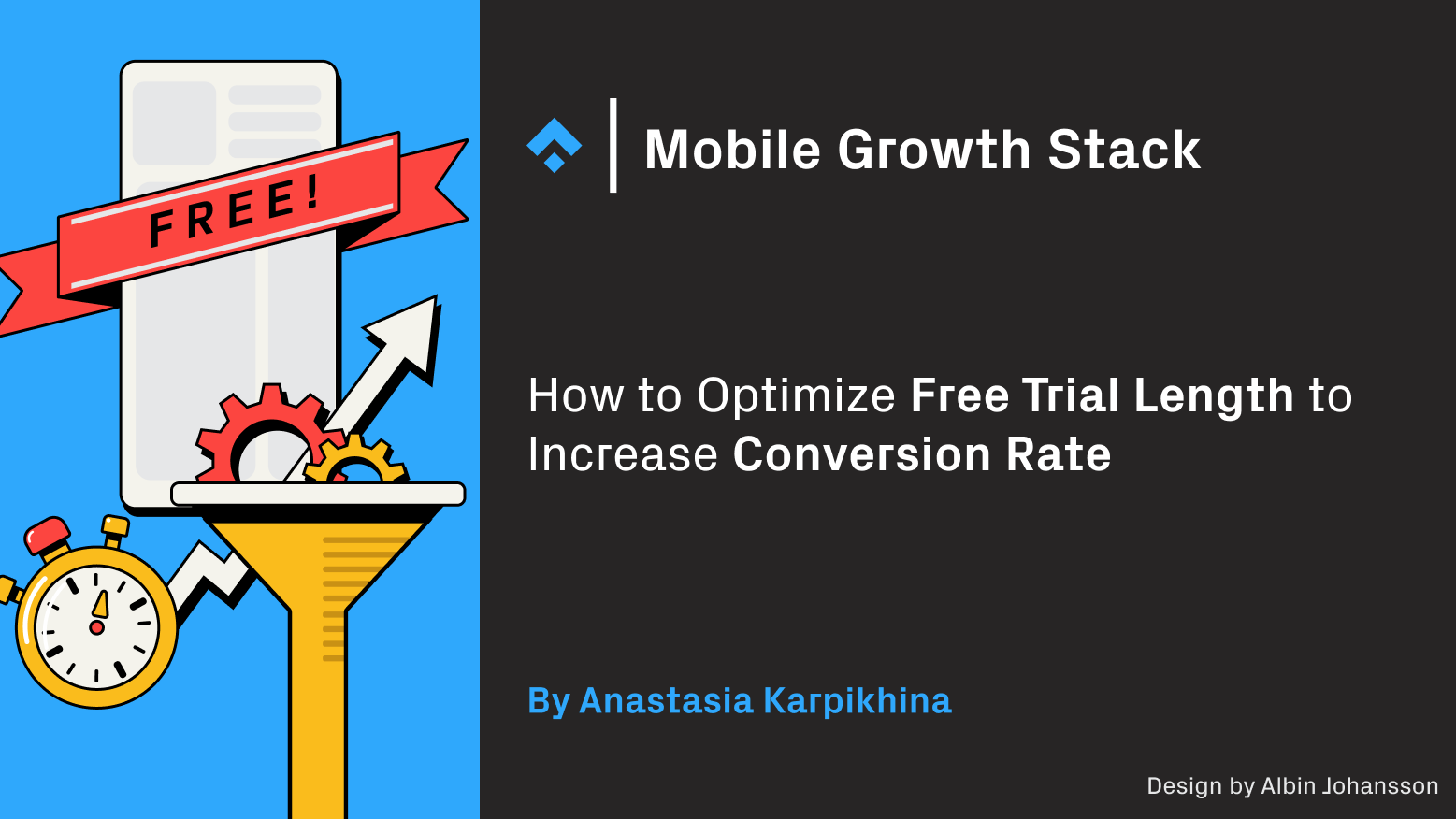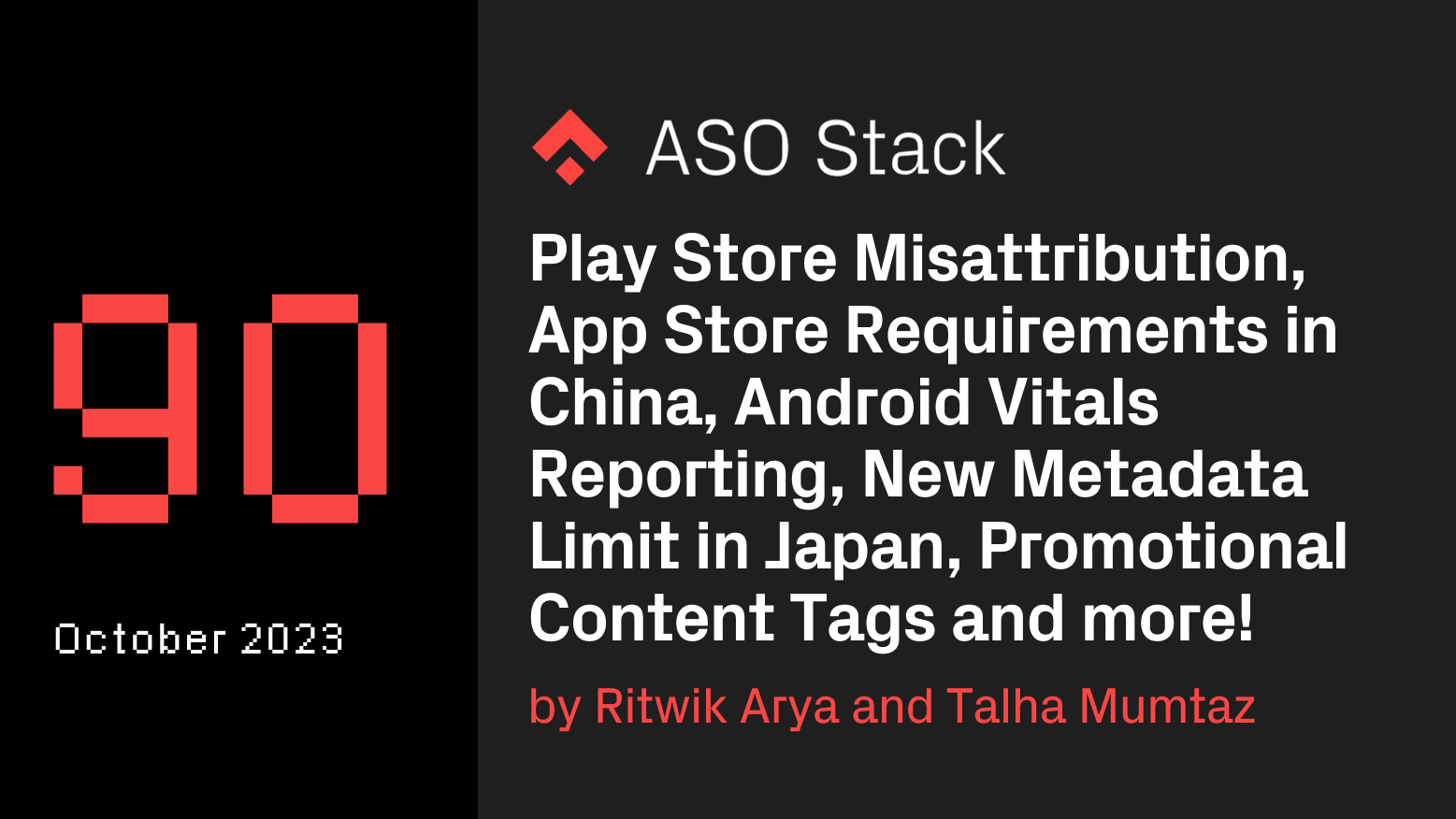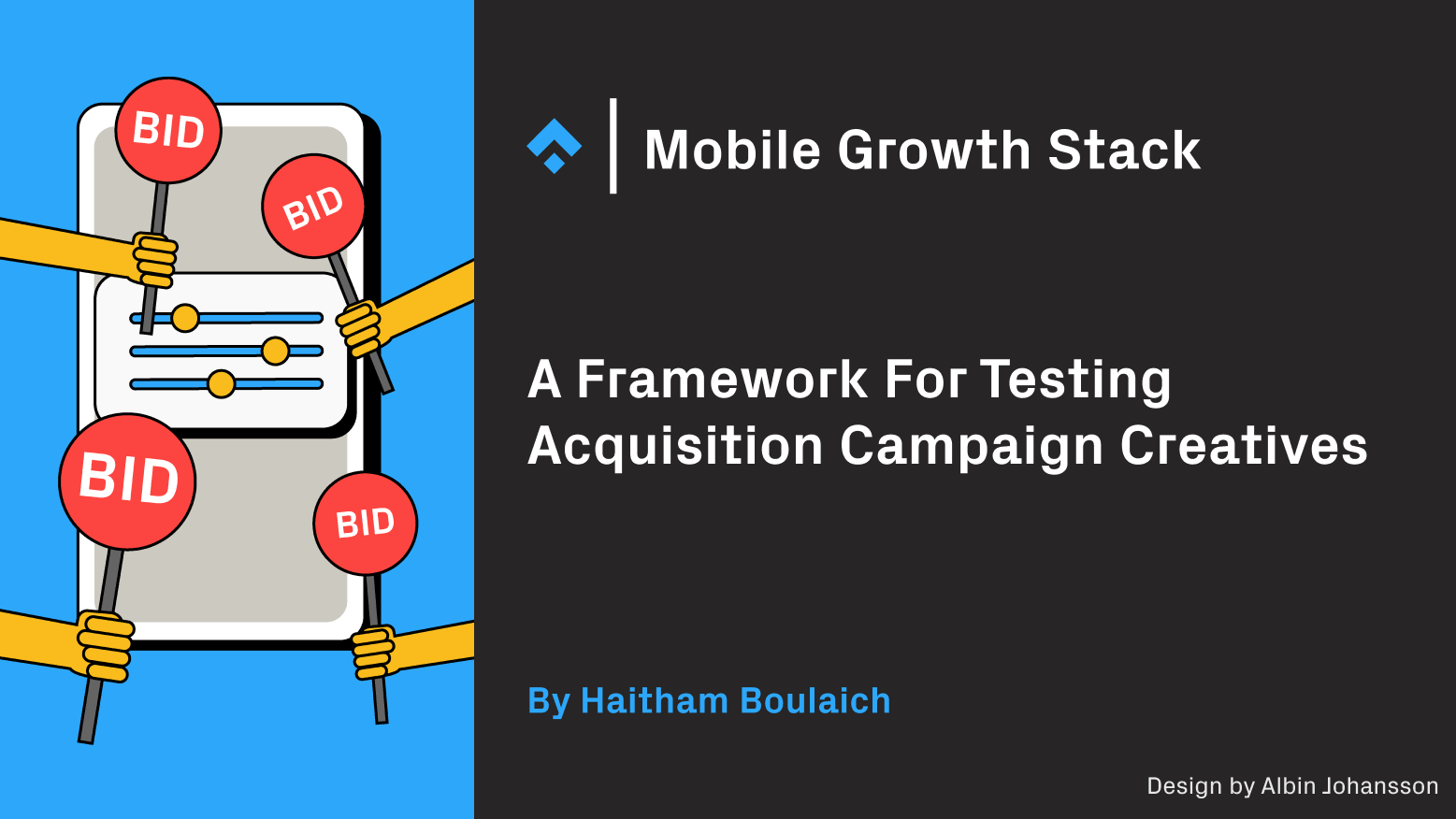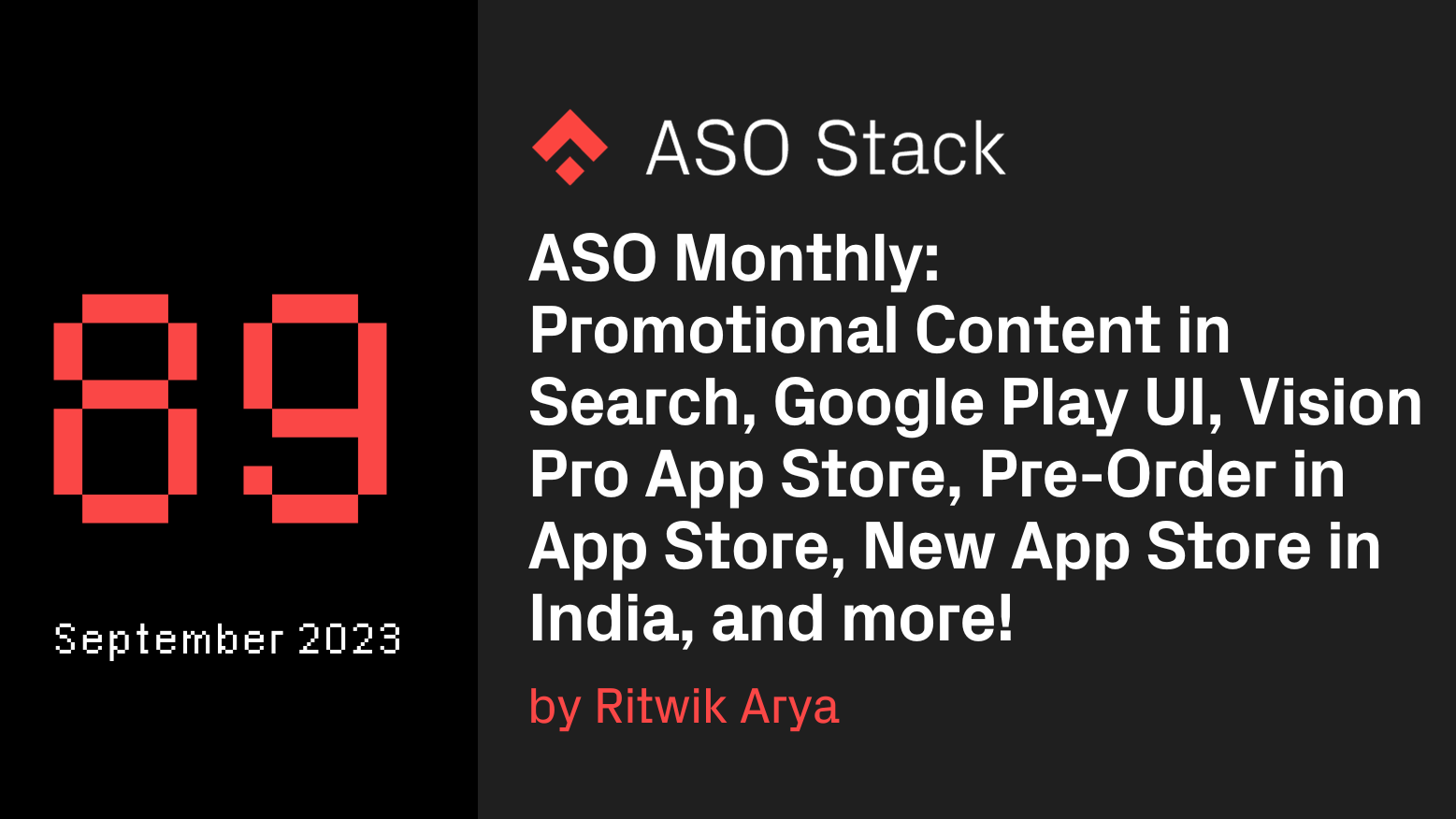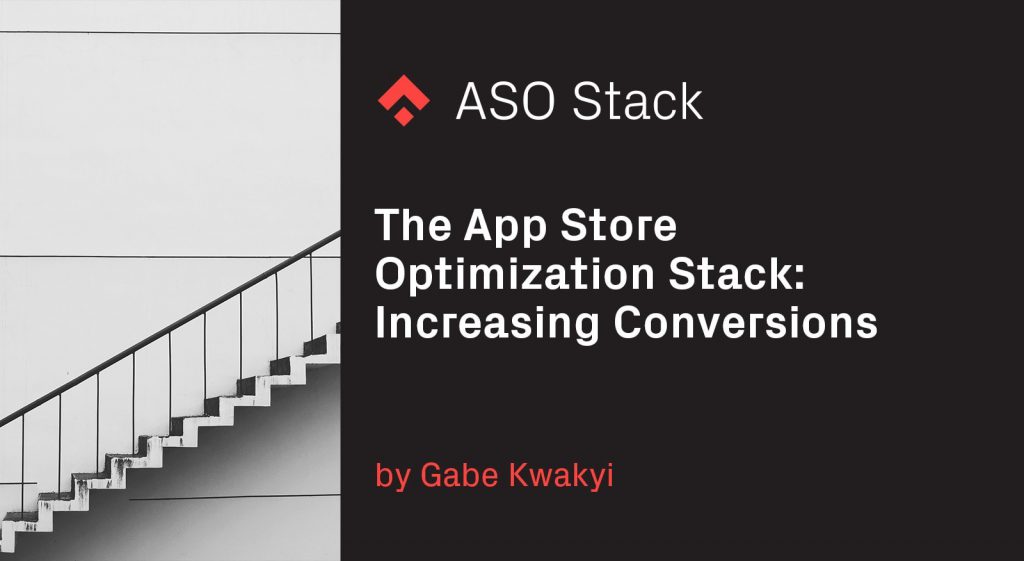
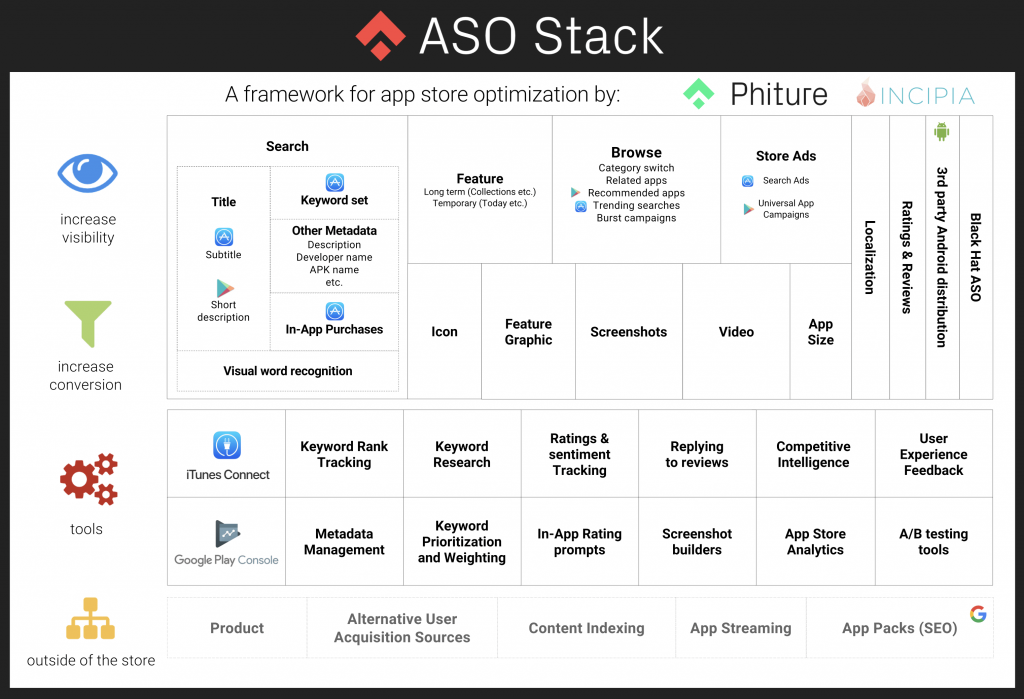 Gabe here, picking up from part 1 of the post series introducing our ASO eBook and the App Store Optimization stack with part 2 to provide an overview of the next section of the ASO Stack: Increasing Conversions.
Gabe here, picking up from part 1 of the post series introducing our ASO eBook and the App Store Optimization stack with part 2 to provide an overview of the next section of the ASO Stack: Increasing Conversions.
Recently, we had a discussion with a prospective client whose sole goal was to increase visibility by capturing a better rank on a target keyword. We explained that, in order to earn a better rank on a keyword, it was necessary to focus on increasing store visitor conversion rate, which was something that this company hadn’t considered.
It’s easy to view boosting the visibility of your app in the store by adding keywords or earning a store feature as the sexier of the two main ASO activities outlined in the ASO stack, just like gross revenue can often earn the spotlight of startup financial reports. Yet, there can be no doubt that increasing conversions is required in order to succeed in ASO, just as a company cannot succeed and grow without turning revenue into bottom-line net income. Without a good conversion rate, top-line gains earned through increasing visibility can actually sabotage your app’s long-term chances at success, given that the algorithms of Apple and Google consider whether or not your app is able to convert visibility into actual users. If your app fails to convert users at a better rate than other apps competing in the same top chart or keyword rankings, then your app’s visibility will begin to fall until your app arrives at a level of visibility with apps that share similar conversion rates.
Increase Conversion

Increasing conversions occur by working on conversion rate optimization (CRO), or raising the rate at which your app preview/listing is able to convert store visitors/impressions/product page views into downloads. Being creative with beautifully crafted and artful app listing elements is the most externally-visible component of CRO; but the process should actually be considered a mix of 2 parts science to 1 part art. In the ASO book, we’ll delve into these steps in more detail, but it’s important to keep the following mixture of activities in mind for CRO:
- Science: Hypothesis generation & A/B test creation
If we use screenshots of features that have higher in-app engagement rate, then potential users seeing these features will consider our app more valuable and be more likely to download it.
- Art: Creating the test elements
Bring creativity into the equation when creating a test based on your hypothesis.
- Science: Reporting and iteration
Use hard data points, rather than eye-balling or hunches to determine whether your test produced a success, and use that data to inform your next hypothesis and test elements.
Icon
![]() The app icon is the only visible element via store feature or top charts, and also Google Play keyword searches. This makes it a prime element of focus for CRO. While many companies consider their icon as off-limits due to branding reasons, testing even slight adjustments in your app’s icon can yield gains without jeopardizing branding.
The app icon is the only visible element via store feature or top charts, and also Google Play keyword searches. This makes it a prime element of focus for CRO. While many companies consider their icon as off-limits due to branding reasons, testing even slight adjustments in your app’s icon can yield gains without jeopardizing branding.
One of the most important aspects that is often missed of CRO in general, and specifically with regard to icons, is to include competitor app icons in the research, rather than optimizing in isolation. Analyzing how your icon is positioned against other top chart or keyword-sourced icons will help you determine how to make your icon more appealing in the real world, vs in the lab.
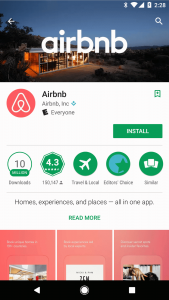 Feature Graphic (Google)
Feature Graphic (Google)
The feature graphic is found in the top-center of your app’s listing after a visitor taps to view more of your app store listing, giving it the most prime real estate of your app’s entire page. Additionally, the feature graphic is an open canvas with which app developers or marketers can do what they like. These two facts make optimizing this element a favorite for ASOs. Check out this feature graphic study that we did recently, and consider some of the following ideas when creating a feature graphic:
- The most common type of feature graphic is a branded-style graphic, with a brand logo at the center of either a single-color background or a photograph.
- Similar to captions in screenshots or text in Facebook Ad images, testing different types of overlayed text on your feature graphic can yield good results.
- Testing how real photographs perform vs branding or other graphic design imagery in order to see which resonates best with your users can also be an easy test to try.
Screenshots
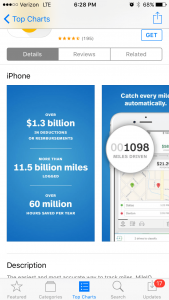 Screenshots are the most direct method by which an app user can preview what using an app is like, other than the preview video. This makes app screenshots of vital importance to CRO, especially for iOS apps, wherein screenshots appear in an App Store search. When creating screenshots, it’s also important to know that most users do not scroll through all of your screenshots. Be sure to order your first few screenshots by those that explain the most important features and value that your app has to offer, so that if users don’t scroll any further, you have still cast your app in the best light possible.
Screenshots are the most direct method by which an app user can preview what using an app is like, other than the preview video. This makes app screenshots of vital importance to CRO, especially for iOS apps, wherein screenshots appear in an App Store search. When creating screenshots, it’s also important to know that most users do not scroll through all of your screenshots. Be sure to order your first few screenshots by those that explain the most important features and value that your app has to offer, so that if users don’t scroll any further, you have still cast your app in the best light possible.
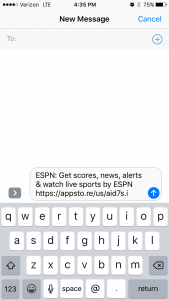 App Title
App Title
By and large, app titles are leveraged for keywords, with CRO assuming a distant second place priority. That said, app titles are still important for explaining to users what your app is all about to users from a keyword search, especially for Android apps, where screenshots do not show. Additionally, your app title will be leveraged to build a preview of your app outside of the App Store channels, including social shares, ads and text messages, which means that your title important for CRO both inside of and outside of the App Store.
Other metadata (short description, developer name, long description, What’s New, etc.)
When it comes to the other, text-based assets of your app listing, there are two top go-to’s for CRO: the Google Play short description and the first 5 (mobile screen-sized) lines of the App Store description. Both of these elements are visible without having to tap “read more,” making them prime opportunities to influence your app’s conversion rate. Focus on optimizing these areas before the rest of the description for the best return on your effort.
One idea for getting the most out of these high visibility areas of your description is to offer users data points that describe your app in the smallest number of characters possible. This includes data points like total downloads, how many years your app has been available for, or the total number/type of features your app has earned.
Like the feature graphic/preview video, the expanded iOS description/Google long description offers an opportunity to exercise creativity in explaining to users.
One idea for using your app’s full description to improve your conversion rate is to test differences in font formatting/section headings/white spacing/content density. Or, try adding/removing/changing the order of major sections in your description.
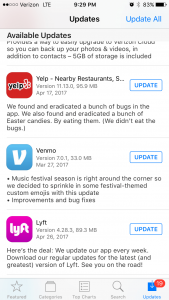 In a similar vein, the What’s New section is centrally located in both the App Store and Play Store, and can also be changed between iOS app versions, making it valuable real estate to use for CRO as well. Try some of these tactics to get the most out of your What’s New text:
In a similar vein, the What’s New section is centrally located in both the App Store and Play Store, and can also be changed between iOS app versions, making it valuable real estate to use for CRO as well. Try some of these tactics to get the most out of your What’s New text:
- Offer appreciation to people for using your app.
- Offer witty or funny comments.
- Explain what new functionality was added and why people should care.
For companies with existing brand awareness, the developer name can be a good way to increase conversion rates by leveraging established brand awareness. Additionally, a well-chosen developer name can also help entice people to view the rest of the developer’s apps.
- Additional text-based metadata includes:
 Category — choosing a category in CRO terms has a bearing on what competition your app is placed into in the top charts, which in turn affects your conversion rates.
Category — choosing a category in CRO terms has a bearing on what competition your app is placed into in the top charts, which in turn affects your conversion rates.- Languages, rating & compatibility — enabling your app for more languages and ages will only serve to increase the total audience your app can convert into users. Additionally, some users may want to download apps that support their other devices.
- In-App Purchases (IAP) — in CRO terms, naming your IAPs is important for appeal and comprehension with users who may browse what features your app offers for paying users. Additionally, your top IAPs are visible in your app listing to visitors, meaning that these IAP (and their prices) can have an impact on your conversion rate.
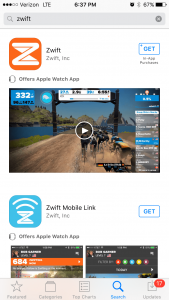 Video / App Preview
Video / App Preview
In open canvas-terms, there is no better element than the app preview video for unfurling your creativity and explaining why users will enjoy using your app. Additionally, for people who watch videos, the likelihood of downloading is much higher (with Android users more often watching videos than iOS users). That said, the majority of users do not watch app preview videos, preferring instead to look at screenshots and other, more easily consumable content within an app listing. This leads to one of the most important components of making a versatile app preview video, which is to ensure your poster frame (or thumbnail image) is viable as a screenshot stand-in for users who do not watch your video.
App Size
While some apps are expected to be larger (e.g. massive production games), the fact that both limited phone storage space and limited download bandwidth are still problems for many users means that an app’s size is a factor of importance in affecting conversion rates for the vast majority of people. In fact, one study by Segment on the conversion rate of an app that was released multiple times at multiple file sizes found that increasing the size of the app reduced conversion rate by up to 66%.
Featuring
While most App or Play Store features earn a boost in visibility and contribute no direct improvement to conversion rate beyond fodder for the developer/marketer to advertise, a select few features do have an impact on conversion rate.
This includes Google’s Top Developers (soon to be replaced) program, Apple’s Essential apps recognition, and both Apple and Google’s Editor’s Choice designation.
Search Term conversion
Search term conversion refers to your app’s ability to convert keyword searches into actual users. As outlined in the beginning of this post, even if your app is able to capture rank on a particular keyword, if your app isn’t able to then convert search impressions into users, that app’s rank score will decline, and in turn the app will earn fewer impressions.
In fact, during a study we did on the top 10 iOS apps ranking for 7 different keywords, one key finding was that including the target keyword in the screenshot captions produced a 2.4x better average rank than not. We will cover search term conversion in more depth in the ASO eBook.
Localization
As referenced in the first post introducing the ASO Stack, localization is about far more than the translation of words into a local language. Successful localization in terms of CRO encompasses some of the following activities:
- Use language that resonates with the local culture, rather than simple, 1:1 translations, which frequently make little sense and can decrease conversion rate.
- Use locally correct references in your graphics and text, such as listing local units of measurement or punctuation in your description (e.g. commas vs periods for prices, like $2,99 in Europe), or including local cities in screenshots.
- Use locally understood cultural references and trends. For example, try using the color red in China (the color of luck), or adding overlaid text into your app icon in Japan.
Ratings & Reviews
One of the most influential ASO activities involves maximizing the number of positive (4 and 5) star ratings and positive user reviews that your app receives. Having a high star rating and positive reviews is vital for convincing users that your app is worth downloading via the wisdom of the crowd. This is especially true for iOS apps, where the number of ratings can serve as a proxy in place of the downloads range that users can see in the Google Play Store.
Both ratings and reviews are important and serve two complementary functions for users. Ratings convey the quantitative information regarding an app’s value, while reviews carry the more substantive, qualitative information to measure an app’s value.
In this light, an app’s star rating can be thought of as the most important single data point affecting an app’s conversion rates. The star rating is presented early-on in-store search results, centrally in the app listing and even in ads and is very easily consumable by users, given that it is a single, aggregated data point. Generally, a star rating of between 3 and 3.99 serves as the threshold for apps of average value, while a star rating under 3 serves as a warning flag to users to stay away and a star rating of 4 or higher indicates that an app is of good to excellent value.
Additionally, savvy users have caught on to the fact that some developers pay for 5-star ratings or otherwise game the star rating or even reviews, meaning that for such savvy users the reviews containing more substantive information will serve as a more objective source of information than an app’s star rating.
The eBook will detail how to optimize your app’s ratings and review system to achieve better results in a sustainable manner.
3rd Party Android Distribution
While choosing the right 3rd party Android distribution channels is primarily an activity that increases visibility, 3rd party distribution also comes into contact with increasing conversion. This is because different stores have different audience types, competition levels and feature opportunities, all of which translate into different conversion rates.
Black Hat ASO
In CRO terms, Black Hat ASO is used by spammers to gain an unfair advantage against legitimate apps by manipulating the areas of CRO that deliver the most impact.
Burst campaigns, the main tool in the black hat ASO’s toolkit, are mostly used for growing an app’s visibility. Yet for Android apps (where the total downloads are visible to users), burst campaigns can also increase an app’s conversion rate by making apps appear more popular than they actually are through this social proof-based data point.
Campaigns that raise an app’s star rating and generate fake reviews are the main Black Hat CRO strategies. By raising an app’s total star ratings, boosting its star rating and/or filling an app’s store listing with flattering reviews, black hat ASOs can fool unwitting, legitimate users that an app’s value is higher than it actually is, and earn a boost in organic downloads.
While it is effective in the short term, over the longer-term Black Hat ASO tactics cannot improve an inherently poor quality app. As such it offers a view into the requirement of having a good conversion rate in order to maintain or grow visibility, as explained in the beginning of this post.
To illustrate this fact, we wrote a case study investigating a weather app spammer that used a set of apps to infiltrate the top keyword ranks for “weather” searches in the Google Play Store. While the spammer used fake reviews and a keyword burst campaign to initially gain a top rank for weather searches, the app subsequently lost ranking as legitimate users stopped downloading it or wrote bad reviews.
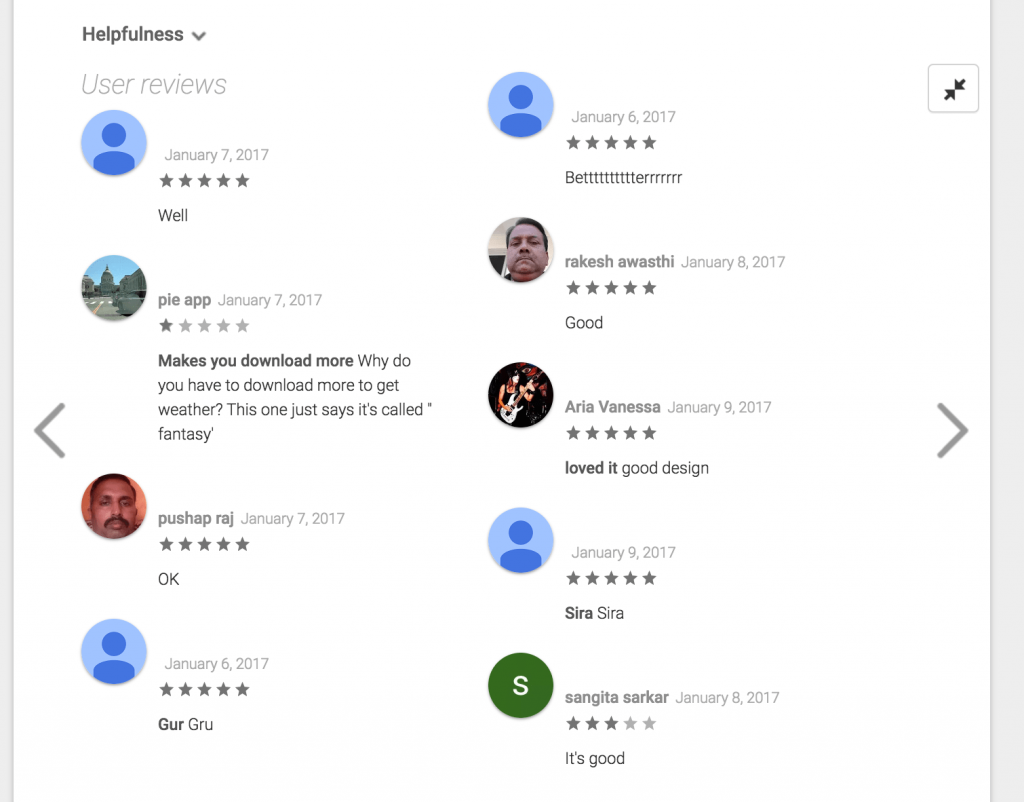
To conclude, while increasing visibility is often the most immediate concern of ASOs, increasing conversion is a necessary subsequent or even concurrent step to maintaining visibility gains and ensuring long-term success.
Keep the ASO Stack handy as a quick-glance resource for understanding the factors affecting ASO conversion, and sign for the email list below to find out when our ASO eBook launches to get the deep-dive on how to implement effective CRO for your app! We’ll continue in two weeks with part 3 of the ASO Stack post series, covering the most useful ASO tools for developers and marketers to leverage.
If you enjoyed part 2/4 of our ASO Stack series, feel free to press ❤ to spread the word.









